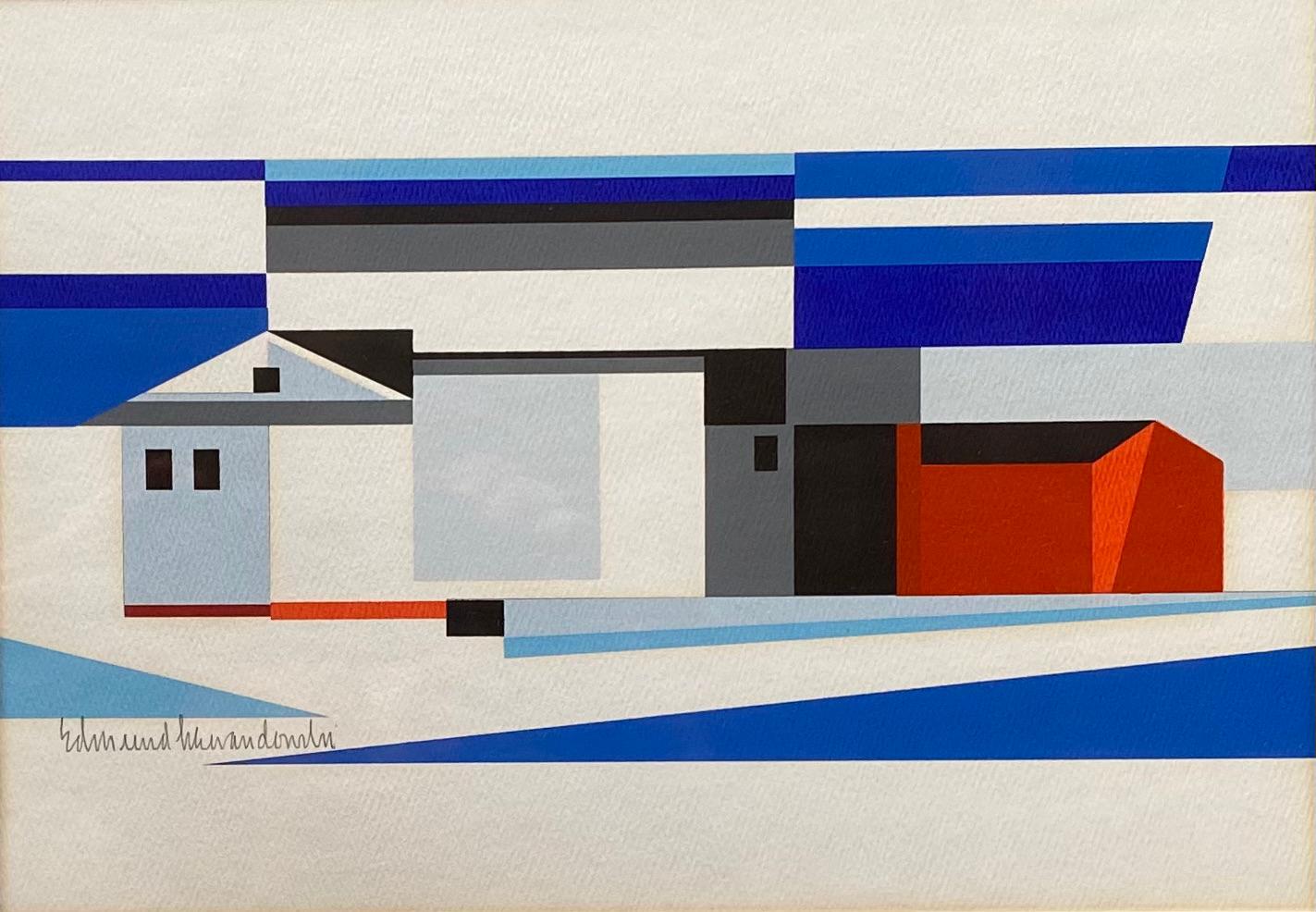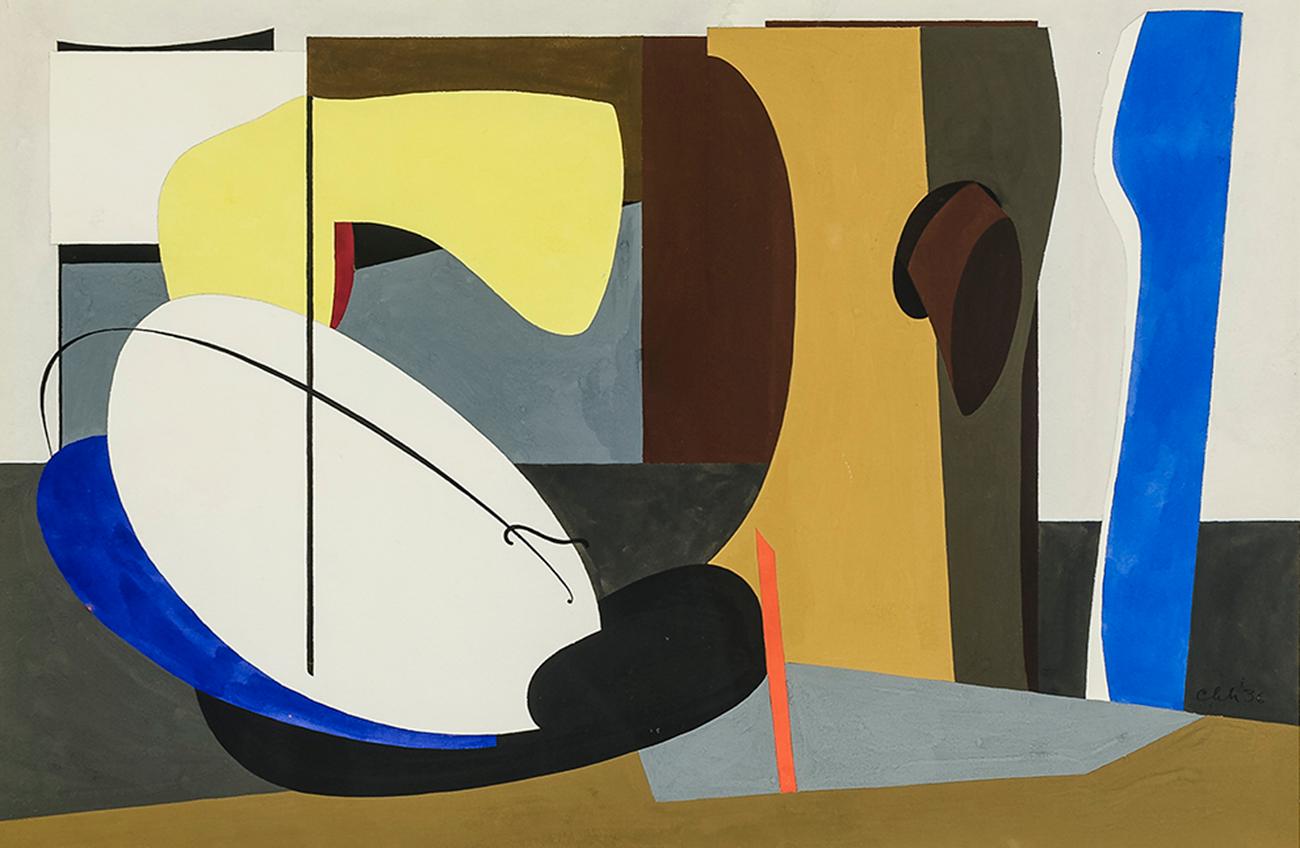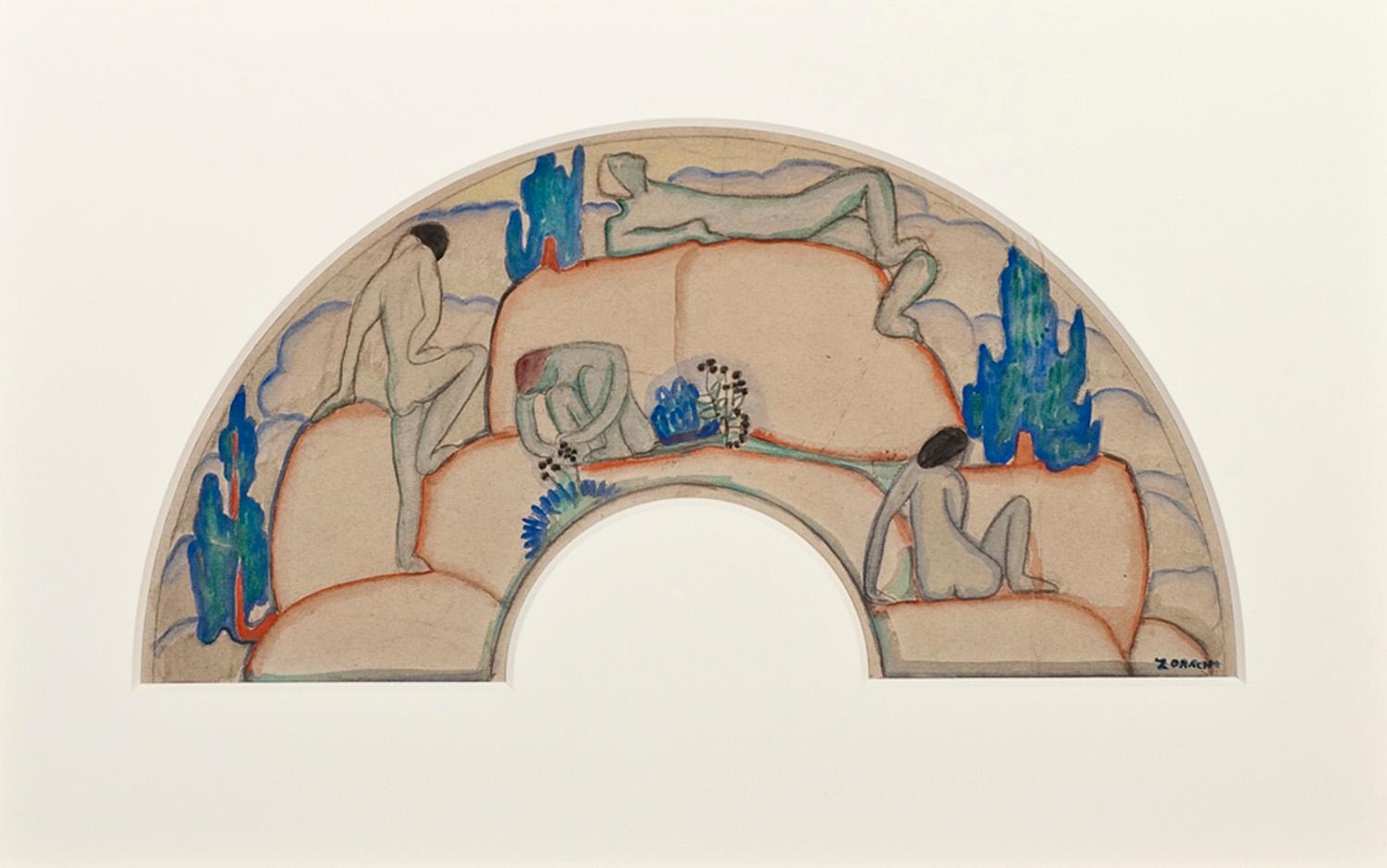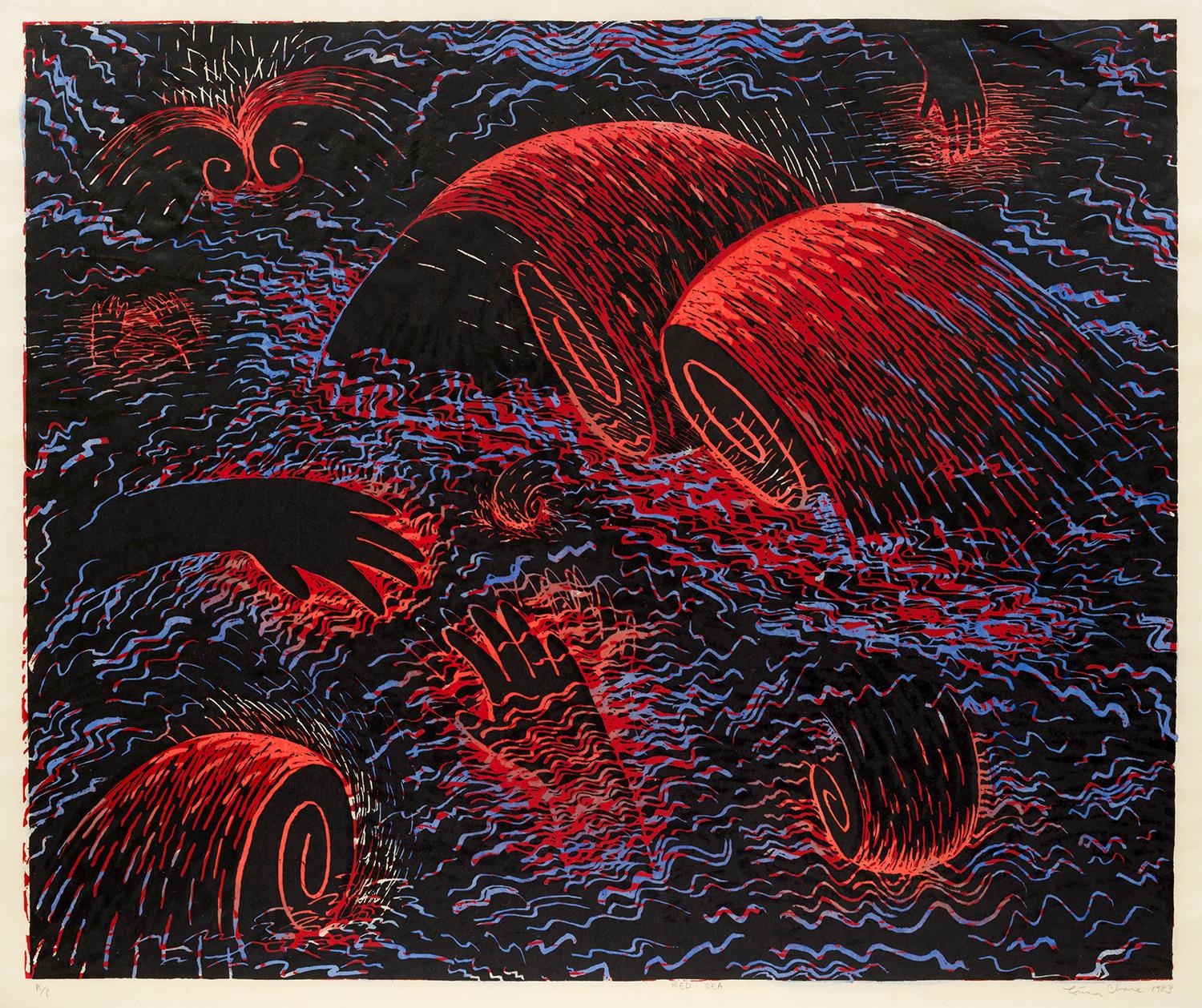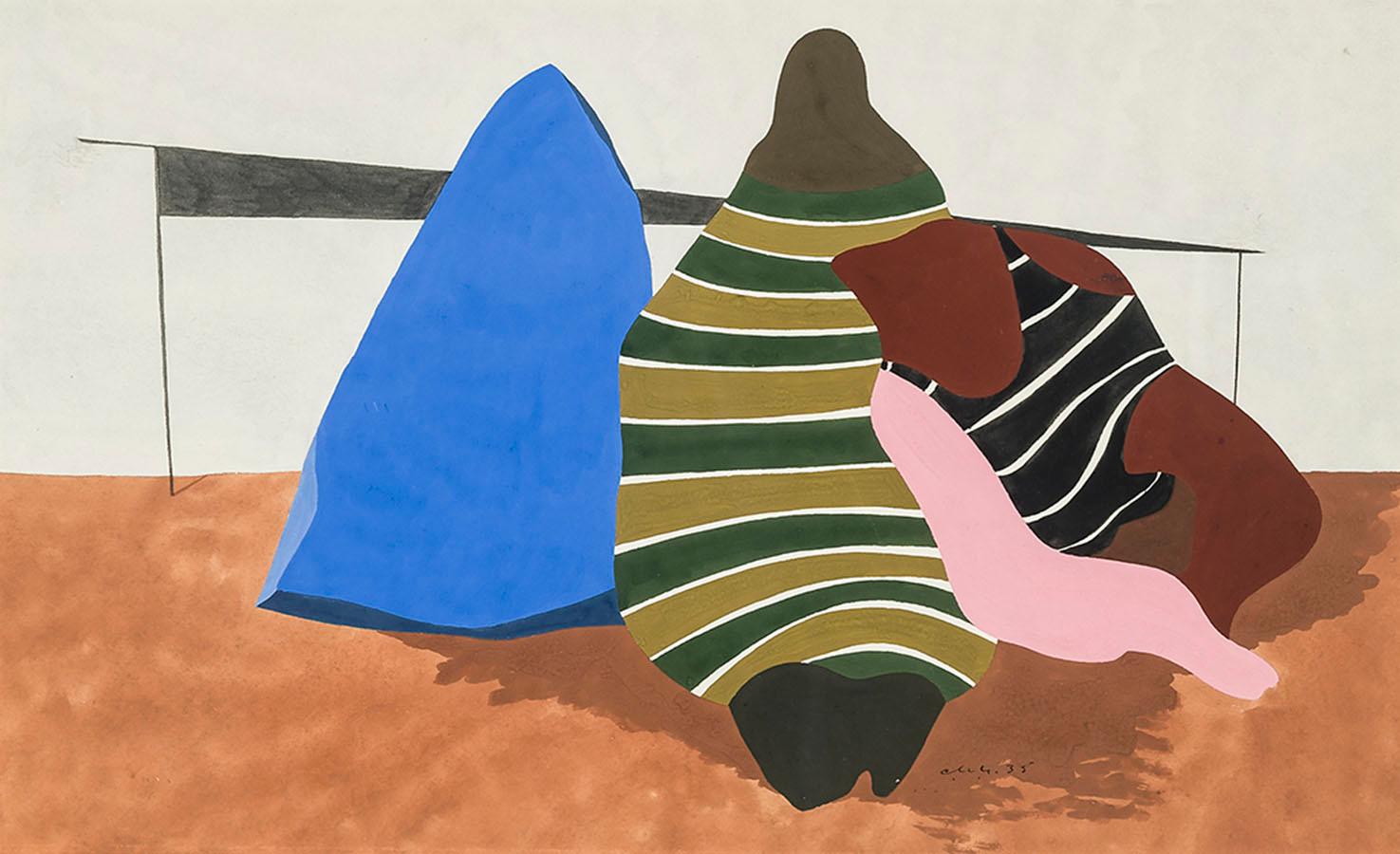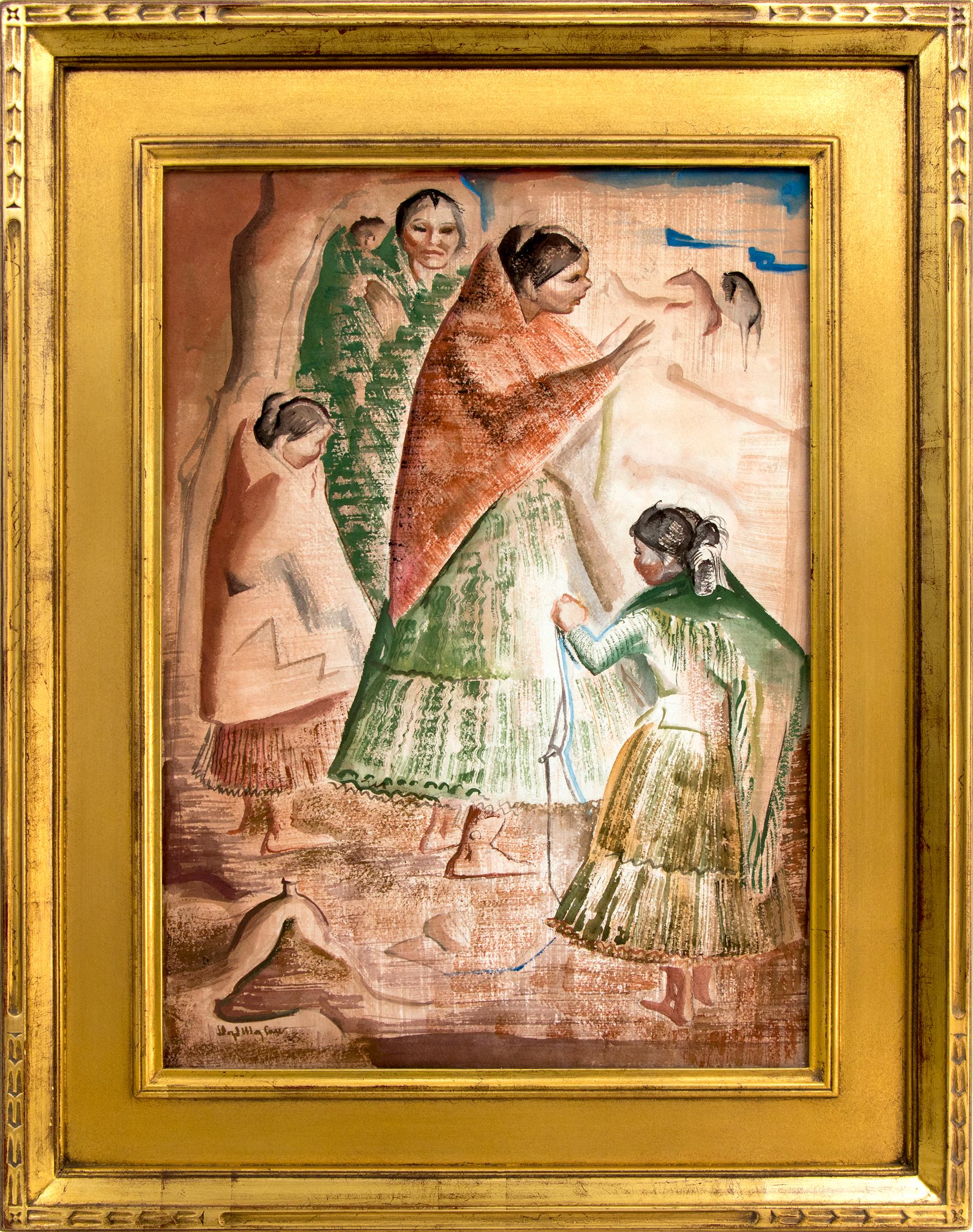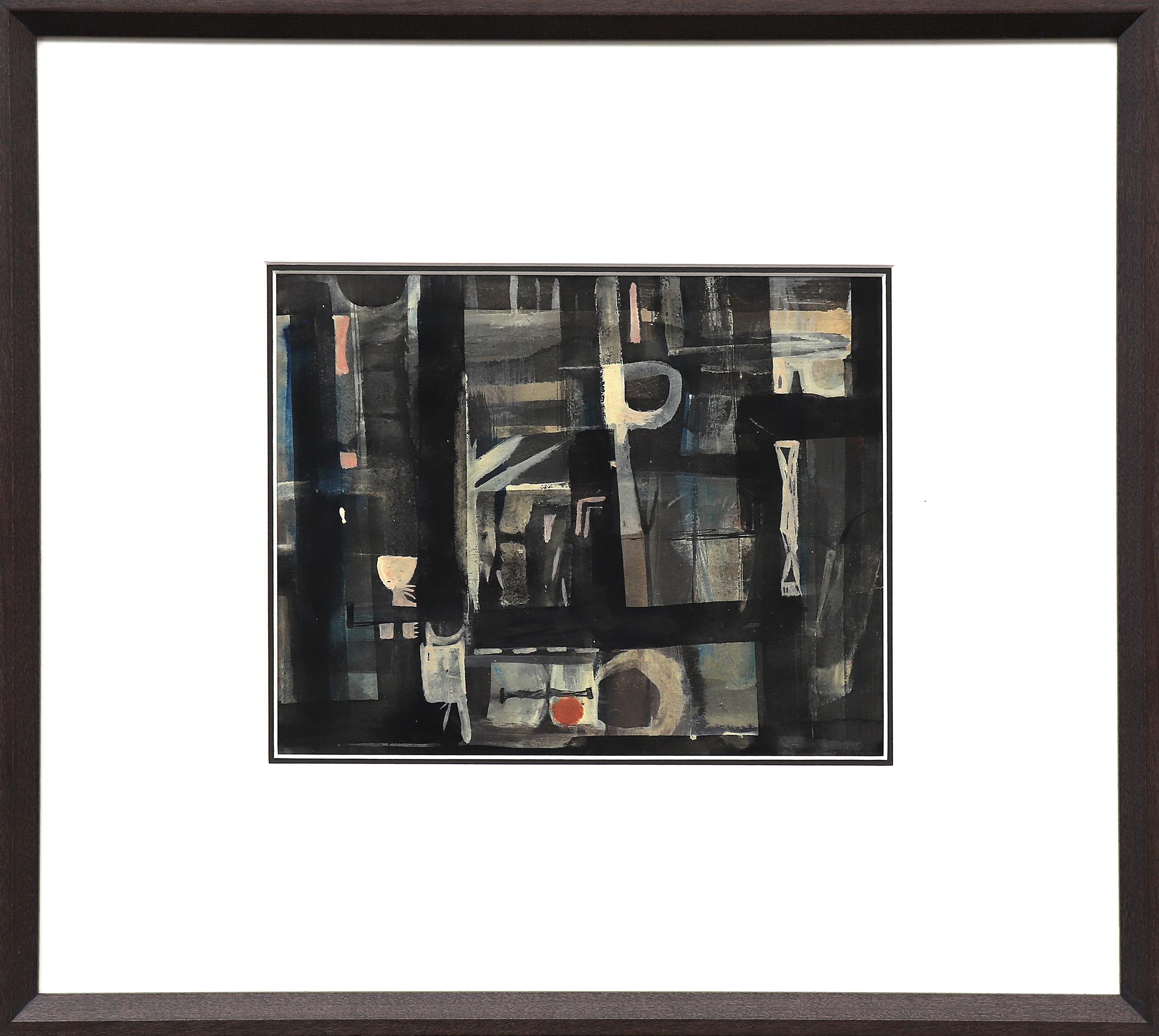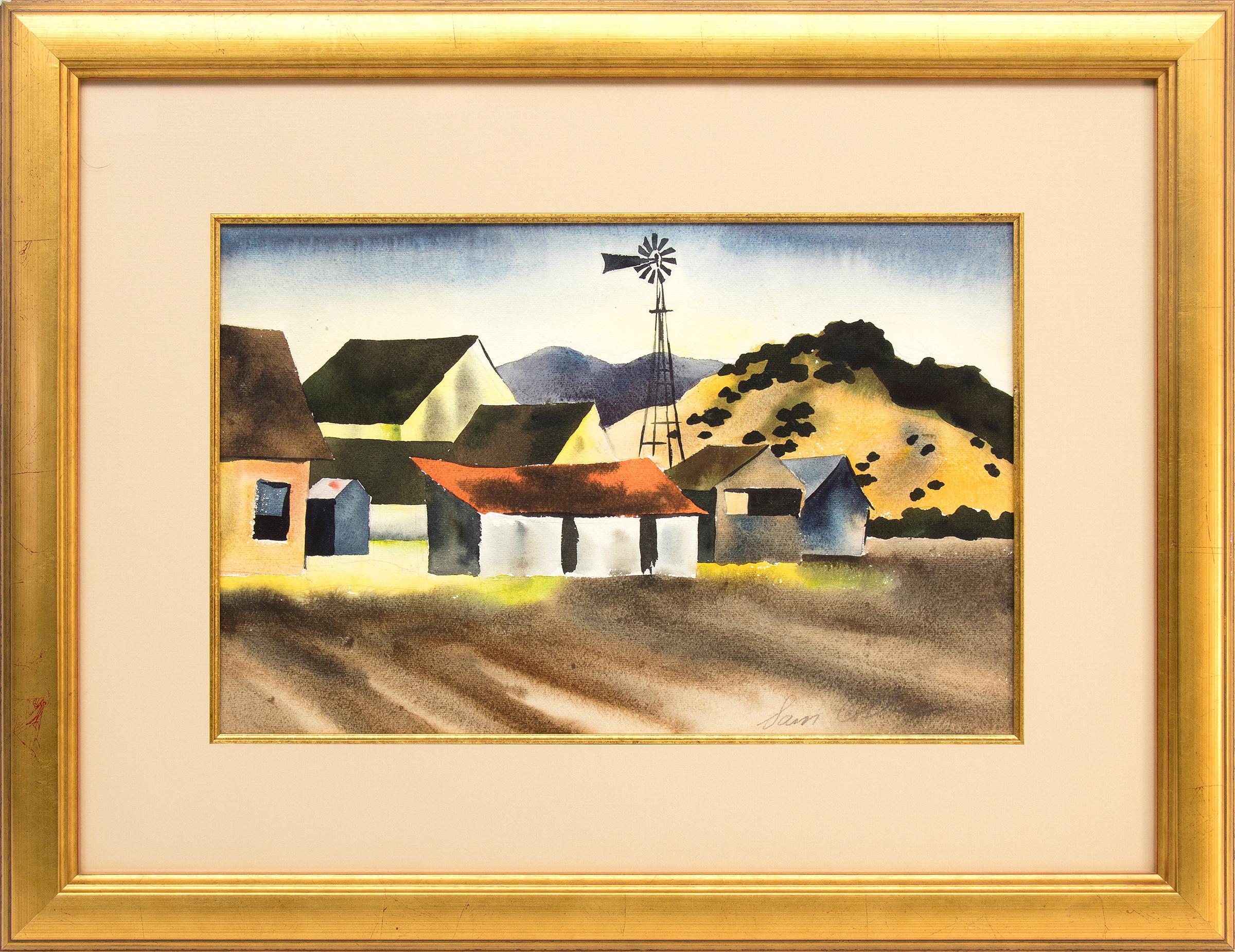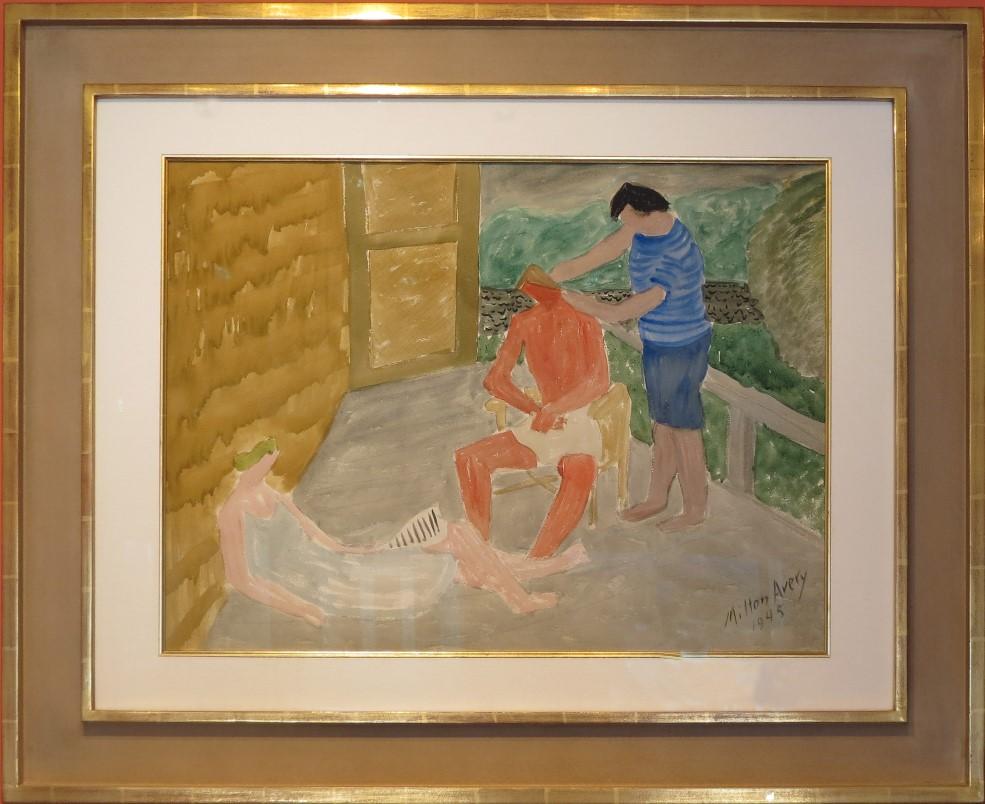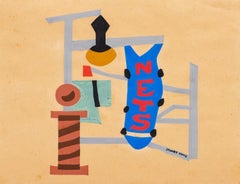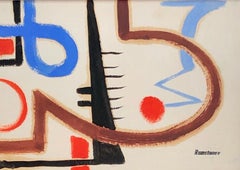
Landscape II
View Similar Items
1 of 1
Arthur DoveLandscape II1941
1941
About the Item
- Creator:Arthur Dove (1880-1946, American)
- Creation Year:1941
- Dimensions:Height: 5 in (12.7 cm)Width: 7 in (17.78 cm)
- Medium:
- Movement & Style:
- Period:
- Condition:
- Gallery Location:New York, NY
- Reference Number:1stDibs: LU1522454462
You May Also Like
- "NY Street Signs" Mid-20th Century WPA 1938 Modernist Abstract Realism Pop ArtBy Stuart DavisLocated in New York, NY"NY Street Signs" Mid-20th Century WPA 1938 Modernist Abstract Realism Pop Art Stuart Davis (American, 1892-1964) "Street Signs" Modernist gouache and traces of pencil on paper in the proto-pop art style Davis is celebrated for, 1938, signed to lower right, framed. Image: 11 1/4 x 15 1/4 inches. Frame by Bark: 18 1/2 x 22 inches. LITERATURE: A, Boyajian, M. Rutkowski, Stuart Davis, A Catalogue Raisonne, Vol. 2, New Haven, Connecticut, 2007, vol. II, p. 632, no. 1232, illustrated. EXHIBITIONS: ACA Galleries, New York American Artists' Congress: Group Exhibition of Paintings and Sculpture, Dec. 3-16, 1939 (SDAB I, 12/3/39, p. 129). Outlines Gallery, Pittsburgh, Stuart Davis, Mar. 3-16, 1946. Coleman Art Gallery, Philadelphia, 5 Prodigal Sons: Former Philadelphia Artists: Ralston Crawford, Stuart Davis, Charles Demuth, Julian Levi...Category
1930s American Modern Landscape Drawings and Watercolors
MaterialsPaper, Gouache, Pencil
- Abstract Work on Paper Mid-Century Modernism Greek American Gouache DrawingBy Jean XceronLocated in New York, NYAbstract Work on Paper Mid-Century Modernism Greek American Gouache Drawing. A modernist artist who emigrated to America from Greece in 1904, when he was fourteen years old, Jean Xceron is described as having a reputation as an artist that has mysteriously fallen into obscurity---especially since he was reportedly quite prominent during his lifetime. However, a partial explanation of that omission is the fact that many of his papers and early records have been lost. He was a painter of biomorphic abstractions and did collages, which were influenced by Dadaism. Xceron was active in New York City when modernism was gaining influence. Of him during this period, it was written that his artistic role was "a vital link between what is commonly termed as the first-generation (the Stieglitz group, the Synchromists, etc.) and second-generation, the American Abstract Artists, the Transcendental Painting...Category
1940s American Modern Abstract Drawings and Watercolors
MaterialsPaper, Gouache
- MODERNIST DRAWING New Hope Mid-Century WPA Abstract Non-Objective Jazz ModernBy Ramstonev (Ramsey/Stone/Evans co-operative)Located in New York, NYMODERNIST DRAWING New Hope Mid-Century WPA Abstract Non-Objective Jazz Modern. Signed with a "Ramstonev" stamp lower right. RAMSTONEV Cooperative Art Project (1937-1939). In the late 1930s, Charles Ramsey became close friends with Charles Evans and Louis Stone. He persuaded them to join him teaching his New Hope summer classes in non-objective painting. Soon, a history-making collaboration began. In 1937, meeting in Evans' studio at the rear of Cryer's Hardware store on Main Street in New Hope, a decision was made to establish the Co-Operative Painting Project. They were intrigued by the cooperative ad-lib process by which jazz musicians created their music. Believing this to be the quintessential American contribution to music, they theorized that a similar result might be obtainable with art, a "visual jam session." This particlarly fascinated Ramsey, who was a jazz buff and had a large collection of jazz records. The objective was to jointly collaborate in the creation of a painting as well as applying collective criticism during its creation. By creating forward movement by general consent, they believed they could produce a higher level of beauty. By consensus it was decided that subject matter would be non-objective. Up to eight people would participate and stop when the painting "felt" finished by common agreement. These co-operative works were done in several different mediums- the majority in pastel, but some in watercolor, gouache, graphite or cut paper collage. On occasion, the group would create a series, as opposed to a single work, created in steps by three or four artists. One of the occasional participants was famed New Hope poet, Stanley Kunitz. These series could range in number from four to sixteen paintings in each. The first of a series would be very basic and the last a fully finished work. In the scope of importance among the New Hope Modernist...Category
1930s American Modern Abstract Drawings and Watercolors
MaterialsPaper, Watercolor, Gouache
- Landscape w/ Barn Abstract Mid-Century Precisionist Gouache Paper ContemporaryBy Edmund LewandowskiLocated in New York, NYLandscape w/ Barn Abstract Mid-Century Precisionist Gouache Paper Contemporary. Sight size 8 1/4 x 11 1/2 inches. The framed work measures 11 x ...Category
1970s American Modern Abstract Drawings and Watercolors
MaterialsPaper, Gouache
- UntitledBy Charles Houghton HowardLocated in New York, NYCharles Houghton Howard was born in Montclair, New Jersey, the third of five children in a cultured and educated family with roots going back to the Massachusetts Bay colony. His fat...Category
20th Century American Modern Abstract Drawings and Watercolors
MaterialsPaper, Gouache, Graphite
- Study for a FanBy Marguerite Thompson ZorachLocated in New York, NYA prominent figure in the evolution of American modernism during the 1910s, Marguerite Zorach was one of the first artists of her milieu to respond to the pictorial innovations of Fauvism and Cubism. In addition to creating spontaneous and vividly colored oils that reflected her inner response to her immediate environment, she applied the precepts of modernism to her prints and watercolors, too. As talented with a needle as she was with a brush, Zorach is also recognized for her tapestries, in which she combined primitive, semi-abstract forms with her keen sense of compositional design. Born Marguerite Thompson in Santa Rosa, California, the artist was the daughter of William Palmer Thompson, a successful lawyer, and his wife, Winnifred, a descendent of New England seafarers. She grew up in Fresno, where, in keeping with her genteel background, she received a liberal education that included training in art, music, French, and German. After graduating from high school, Marguerite taught at a local school for a year prior to enrolling at Stanford University in 1908. However, she abruptly abandoned her studies that same year when her aunt, Harriet Adelaide Harris, a retired teacher and painter who lived in France, convinced her to come to Paris to study art. Upon arriving in the French capital, Zorach visited the Salon d’Automne, where she had the opportunity to see examples of German Expressionism and paintings by avant-garde artists such as Henri Matisse, André Derain, and Albert Marquet––all exponents of Fauvism who favored simplified forms, bold contours, and a highly subjective use of color. Zorach’s contact with cutting- edge art and artists was further enhanced through the efforts of her eccentric and well-connected Aunt “Addie,” who introduced her to a number of influential figures in the Parisian art world, among them the American expatriate collector, Gertrude Stein, as well as painters such as Matisse, Pablo Picasso, and Henri Rousseau. By the end of 1908, Marguerite was experimenting with the precepts of Fauvism, as apparent in works such as Luxembourg Gardens (1908, private collection; see Roberta K. Tarbell, Marguerite Zorach: The Early Years, 1908–1920, exhib. cat. [Washington, D.C.: National Collection of Fine Arts, 1973].) As well as visiting Paris’s leading commercial galleries and museums, Marguerite spent a few months attending classes under Francis Aubertin at the École de la Grande Chaumière, although she found its traditional academic curriculum uninspiring. In 1911, after spending the previous two years touring the Continent, she returned to Paris and enrolled in classes at the Académie de la Palette, a progressive art school where students were encouraged to follow their own stylistic inclinations. Marguerite’s teachers included Jacques-Emile Blanche, a highly regarded portrait painter. More importantly, she also received instruction from the school’s progressive-minded director, John Duncan Fergusson...Category
20th Century American Modern Abstract Drawings and Watercolors
MaterialsPaper, Watercolor


